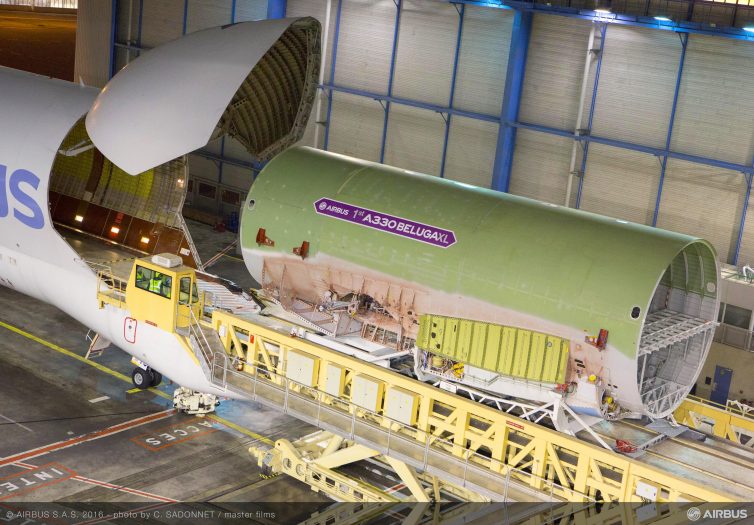
So meta. The current Beluga hauling Beluga XL parts
When living large is just not good enough, you need to live XL — Beluga XL that is!
Airbus is in process of upgrading their “oversize cargo airlifter” and recently shared some photos of its progress. The new model will replace the five current Beluga STs (for Super Transporter) that are used to fly aircraft parts around Europe to Airbus final assembly sites in Hamburg and Toulouse.
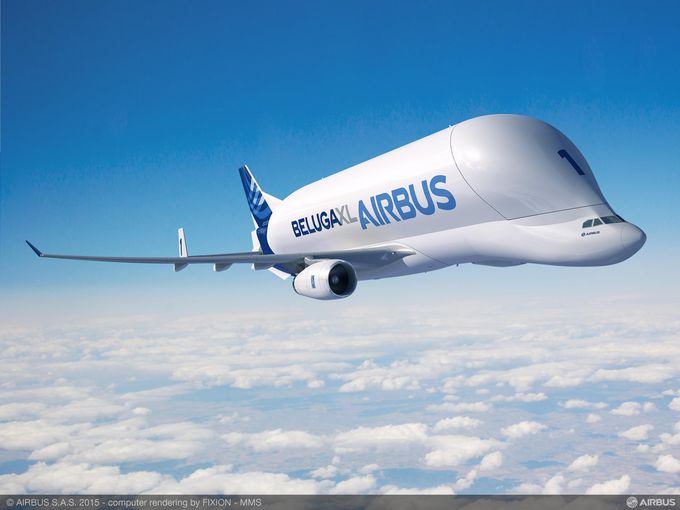
A mockup of the new Airbus Beluga XL
I typically find two reactions with the current Airbus Beluga. Either “OMG that is freaking awesome” or “what the hell, that ugly plane?” Sure, it might be a look like a plane that only a mother could love, but I find it rather beautiful.
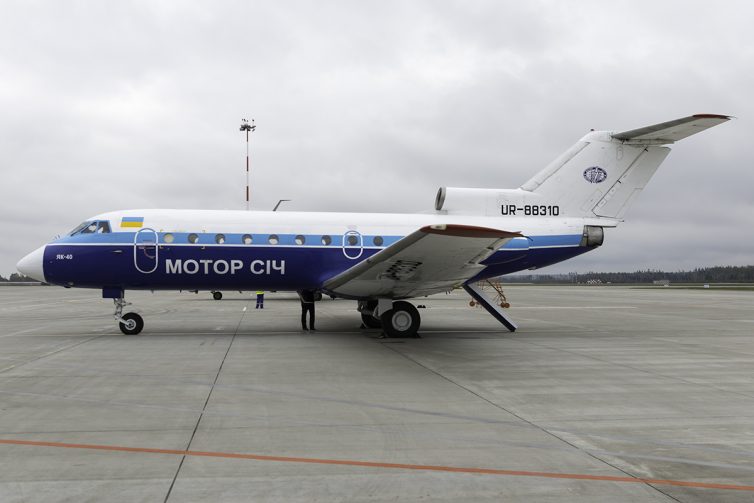
This lovely Yak-40 on the ramp of UMMS belongs to Motor Sich – Photo: Bernie Leighton | AirlineReporter
Since 1907, it has been home to various instances of the same engine manufacturing concern over varying countries and names. Today, Zaporozhye is the headquarters of Motor Sich; the largest producer of Soviet-era and Russian aerospace turbine engines by quantity. While they are best known for the Ivechenko-Progress D36/4D36 series engines, they also manufacture the famed D-18 engine attached to the ANs 124 and 225. To top that off, they also manufacture the most important gas turbines of all: the kind you put in helicopters. That’s awesome. But you probably don’t need to know much more about that part of Motor Sich.
Of course, this is the former Soviet Union. For reasons hard to explain, they founded a corporate shuttle service in 1984. After the collapse of the Soviet Union, Motor Sich did not die, in fact it expanded its scope to general passenger operations.
This is Motor Sich Airlines.
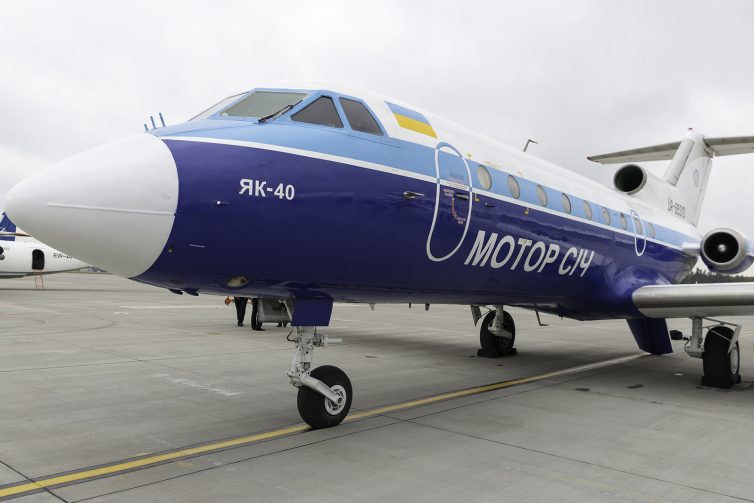
Now that’s a profile! Photo: Bernie Leighton | AirlineReporter
They have Yak-40s. If you have a Yak-40, I will fly you.
My contacts within the Belarusian travel scene had arranged with Motor Sich to swap one of their An-24s out of their flights from Zaporozhye to Minsk in exchange for a Yak-40. Then they were to have it stick around for an hour or two for a bunch of us Soviet metal hungry tragics to do a basic instrument training flight on as passengers.

We flew over 412,000 miles this year – Image: GCMap.com
Let me be honest. I sort of roll my eyes a bit every time I see one of these ’œyear-end review’ type stories. I don’t know why. Maybe I am not really that into the whole ’œnew year, new beginnings’ sort of thing (I never do a new year’s resolution). However, it is a spot in time to check in and sort of see where AirlineReporter is and compare to previous years. Since I am taking the time to look at all our analytics and think about 2016, I figure I might as well paste a few stats into a story, share them with you, and add some commentary. Spoiler: 2016 was a pretty slick year!
-
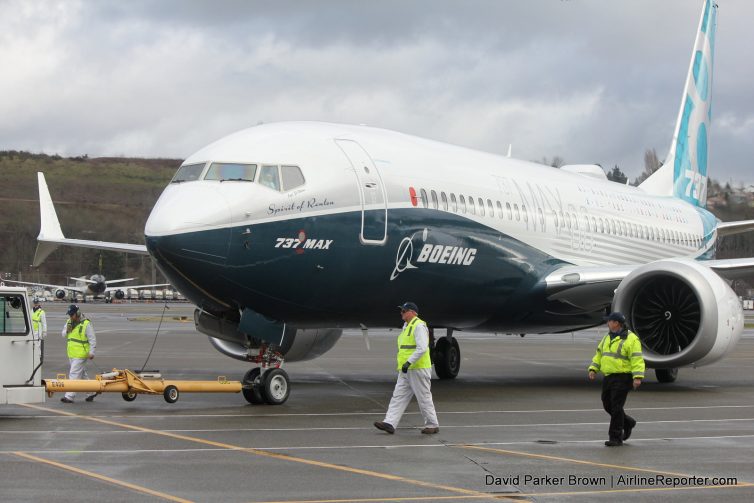
-
737 MAX first flight
-
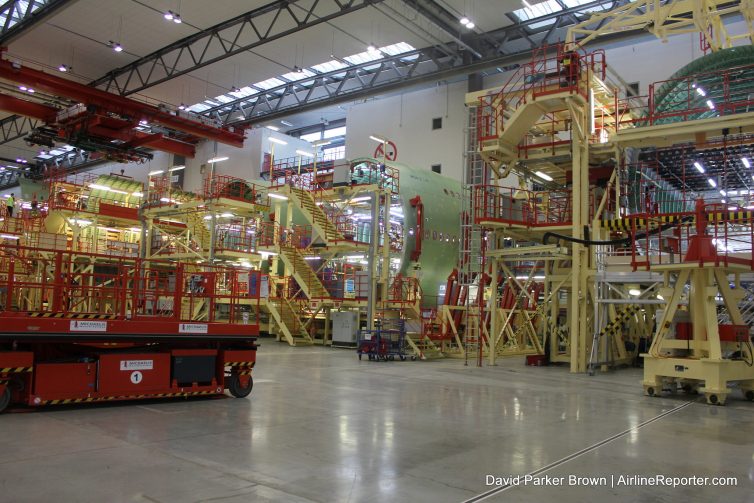
-
New A380s in Hamburg
-
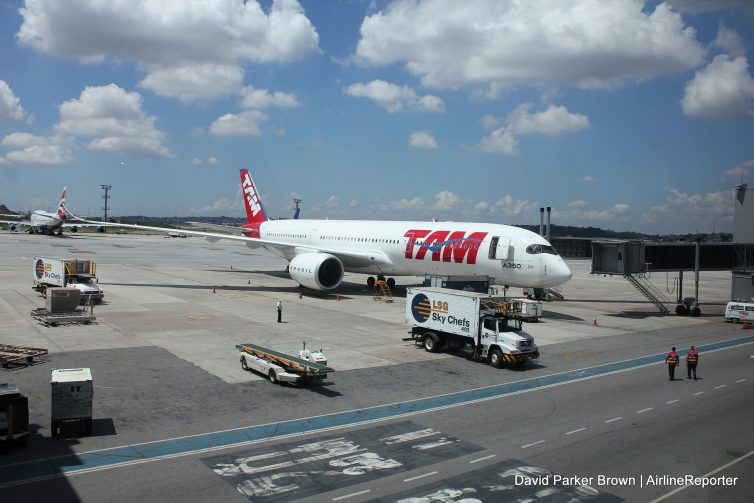
-
TAM A350 in Sao Paulo
From year to year we have seen great growth. 2016 wasn’t about additional readership or miles flown, but about something much more important to me: growth of love. As I wrote a few weeks ago AirlineReporter and I had an interesting year together. An important year. One that will shape the future of the site, our writers, and our content. I think mostly for the good. That said, I have been very happy to see that even with lower content, we didn’t see a huge drop in traffic and your comments seem to be up (thanks)! We have also just hit 90,000 Twitter followers and expect to hit the 100,000 mark later this year. That’s freak’n awesome.
Let’s run through some of these stats. Hold onto your seats, this is going to be a slightly better than average ride!
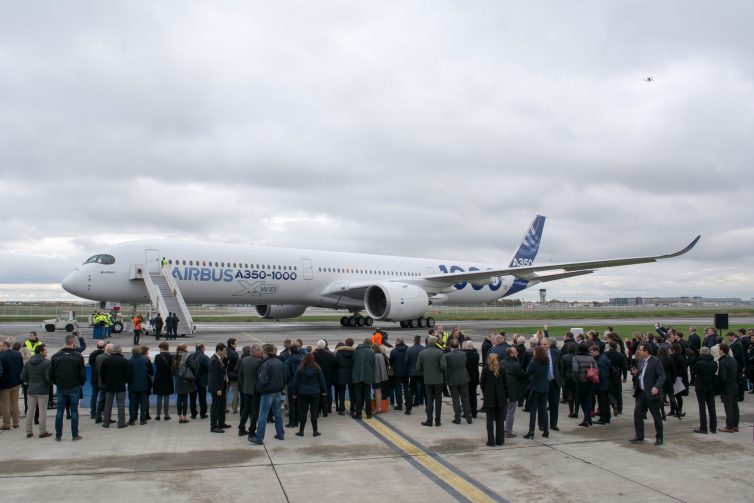
The first A350 – Photo: Jason Rabinowiz
I would say that Jason Rabinowitz and I are pretty good friends. He also writes for AirlineReporter from time to time. Often he reaches out and asks if it is okay to share a story. I have never turned him down. Other times I spend lots and lots of time trying to convince him to share his story. He often agrees. Neither of these is the case for when he went to watch the first flight of the Airbus A350-1000 in Toulouse, France.
%CODE3%
I couldn’t go, so I wanted to live through his story. He had a great time, shared it via his social media, took some great photos, but I couldn’t convince him to write up the story. Fine. Guess what? I am going to write up a story for him. Kinda.
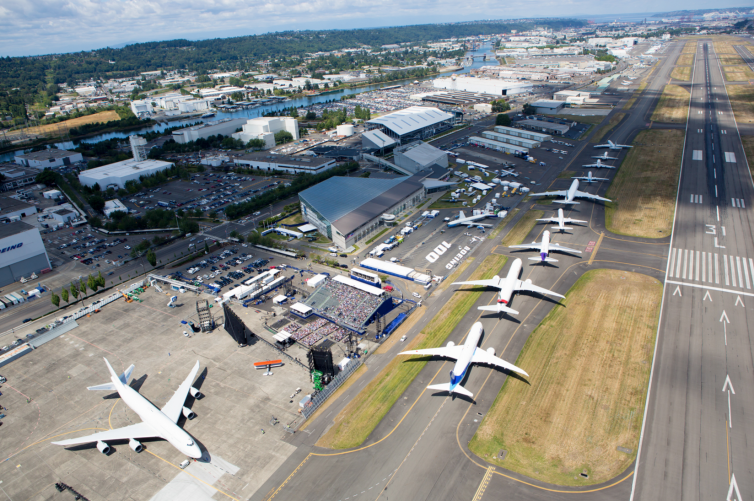
Boeing jetliners, from its first 707 to the latest 787 Dreamliner, line up along a Boeing Field taxiway in Seattle, WA on July 15, 2016 to celebrate the company’s 100th anniversary – Photo: Jeremy Dwyer-Lindgren
One of the best parts of doing this whole AirlineReporter gig is all the people that I end up meeting. Very early on I met Jeremy Dwyer-Lindgren. He was working for NYCAviation.com at the time and we were both new to the airline blogging world. He was also based in Seattle and we created a friendship and have always had a healthy competition.
It was obvious to me that Jeremy was an extremely talented photographer. Early on, I think he would agree that I often won our healthy competition, but the jealous pendulum soon swung the other direction. Soon, bigger and bigger names were looking to make use of his skills and abilities (and rightfully so). He did time as co-Editor-in-Chief with AirwaysNews (Airchive at the time) and was getting more and more freelance work — including USA Today. He has taken photos of some amazing airline-related events and some non-aviation stuff too (including the Super Bowl). He even took the photo that I am currently using on my author profile and Twitter account (while we were in Houston).

Jeremy and me getting down to business in Houston… kind of.
Going from being an AvGeek with a camera to one heck of an amazing photojournalist is quite the journey. I wanted to share some of his perspective via an interview that we had.










